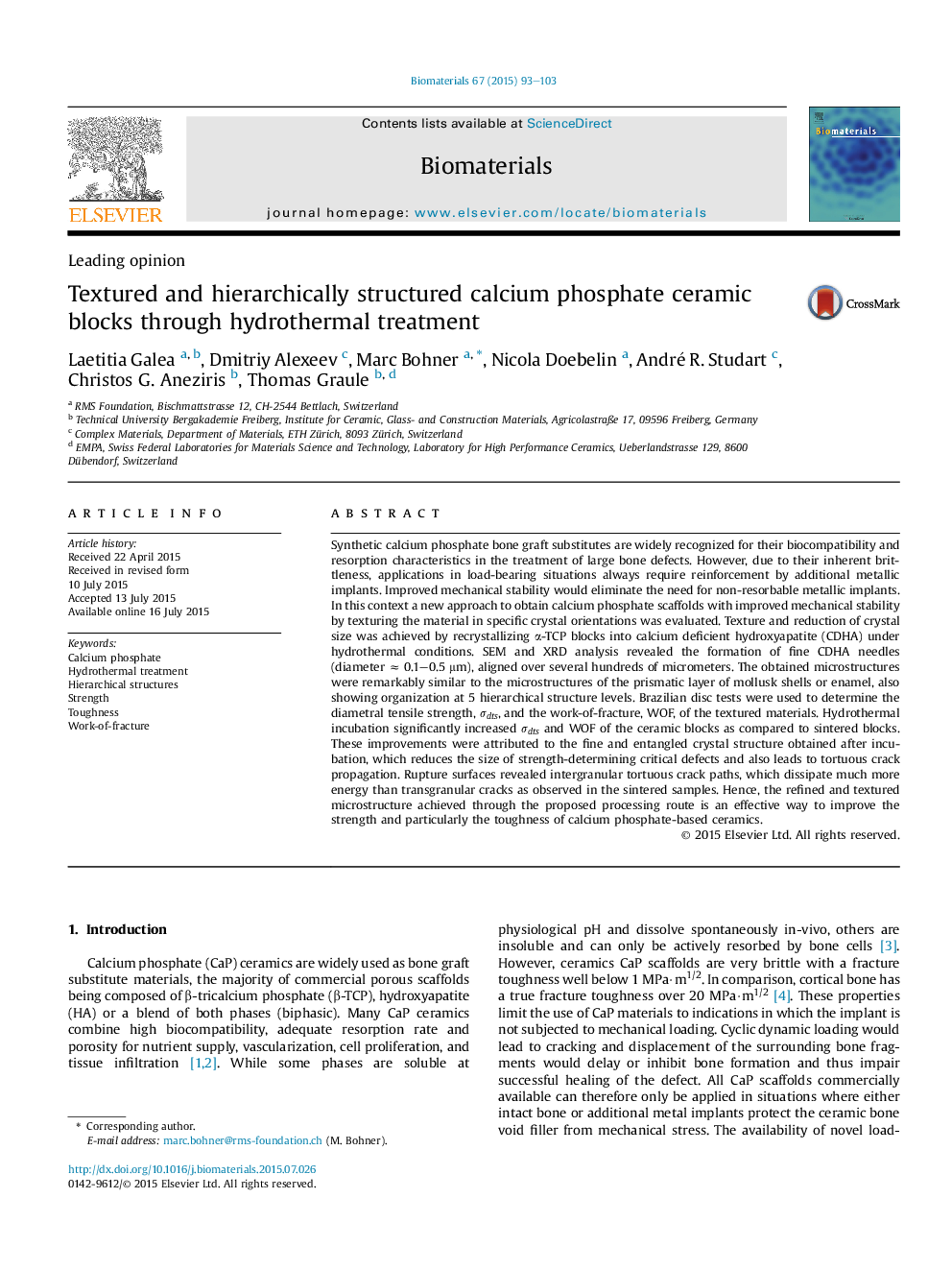| Article ID | Journal | Published Year | Pages | File Type |
|---|---|---|---|---|
| 6485447 | Biomaterials | 2015 | 11 Pages |
Abstract
Synthetic calcium phosphate bone graft substitutes are widely recognized for their biocompatibility and resorption characteristics in the treatment of large bone defects. However, due to their inherent brittleness, applications in load-bearing situations always require reinforcement by additional metallic implants. Improved mechanical stability would eliminate the need for non-resorbable metallic implants. In this context a new approach to obtain calcium phosphate scaffolds with improved mechanical stability by texturing the material in specific crystal orientations was evaluated. Texture and reduction of crystal size was achieved by recrystallizing α-TCP blocks into calcium deficient hydroxyapatite (CDHA) under hydrothermal conditions. SEM and XRD analysis revealed the formation of fine CDHA needles (diameter â 0.1-0.5 μm), aligned over several hundreds of micrometers. The obtained microstructures were remarkably similar to the microstructures of the prismatic layer of mollusk shells or enamel, also showing organization at 5 hierarchical structure levels. Brazilian disc tests were used to determine the diametral tensile strength, Ïdts, and the work-of-fracture, WOF, of the textured materials. Hydrothermal incubation significantly increased Ïdts and WOF of the ceramic blocks as compared to sintered blocks. These improvements were attributed to the fine and entangled crystal structure obtained after incubation, which reduces the size of strength-determining critical defects and also leads to tortuous crack propagation. Rupture surfaces revealed intergranular tortuous crack paths, which dissipate much more energy than transgranular cracks as observed in the sintered samples. Hence, the refined and textured microstructure achieved through the proposed processing route is an effective way to improve the strength and particularly the toughness of calcium phosphate-based ceramics.
Related Topics
Physical Sciences and Engineering
Chemical Engineering
Bioengineering
Authors
Laetitia Galea, Dmitriy Alexeev, Marc Bohner, Nicola Doebelin, André R. Studart, Christos G. Aneziris, Thomas Graule,
